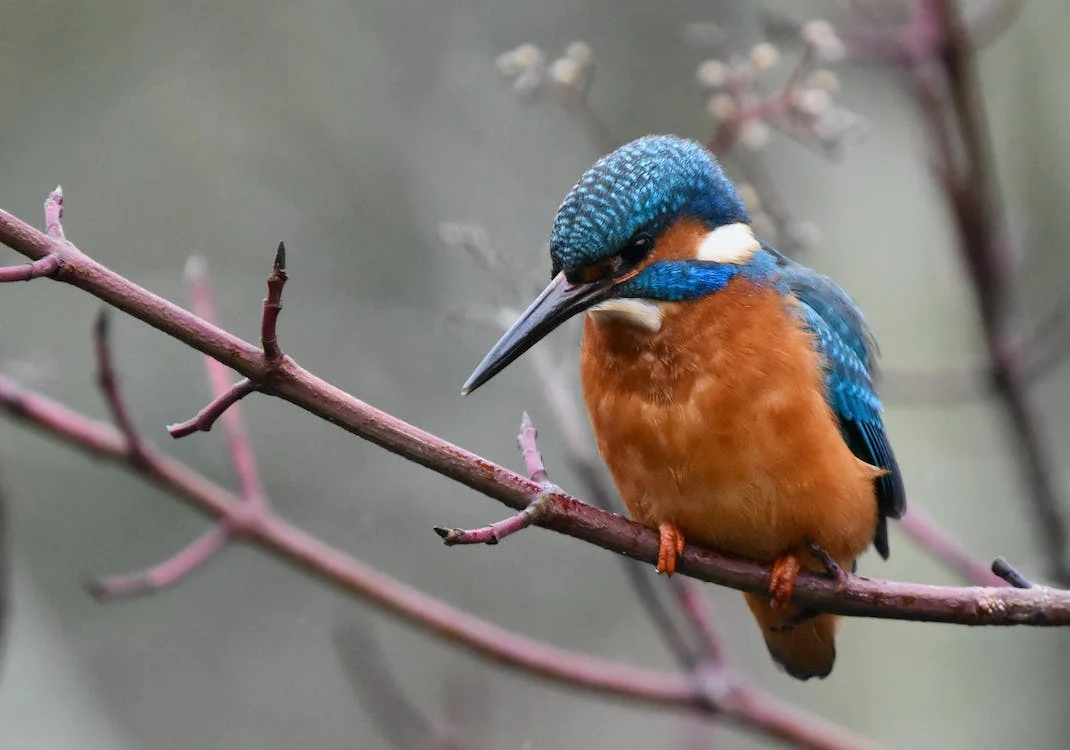It is a tiny, jewel-like kingfisher, characterized by a thin, dark blue crown, and an orange face with violet cheek streaks. This bird species thrives on lower vegetation levels in particular forests, thickets, but more commonly of woodlands. Unassuming, it stays motionless for an extended period before rapidly pursuing their prey. The call is a piercing, insect-like “tsik,” often given during flight.
Read further to know more about the African Pygmy Kingfisher.
What is an African Pygmy Kingfisher?
African Pygmy Kingfisher is a tiny kingfisher that occurs across sub-Saharan Africa, partly because of its ability to thrive in a vast range of woodland habitats. Despite the name, it rarely fishes, and will primarily insects and some invertebrates to supplement its diet.
Its seven levels of classification are as follows:
Kingdom: Animalia
Phylum: Chordata
Class: Aves
Order: Coraciiformes
Family: Alcedinidae
Subfamily: Alcedininae
Genus: Ispidina
Species: I. picta
Pygmy Kingfisher Physical Description
African Pygmy Kingfishers are smallish birds, growing 4.3 to 5.11 inches or 11 to 13 centimeters, and weighing around 12-13 grams. Both sexes look similar, sporting rufous underparts, dark blue crown, blue back stretching down the tail, and an orange face with violet streaks on its ear tetrices. Juveniles look similar but with fewer ear marks, and a darker bill than the bright reddish-orange the adults have.
Where can they be spotted?
African Pygmy Kingfishers spread throughout sub-Saharan Africa, occurring in Nambia, Botswana, Zimbabwe, Mozambique to South Africa. It thrives in a wide range of woodland habitats, such as riverine forests, coastal bushes, gardens, and plantation.
Interesting Facts You Should Know About the African Pygmy Kingfisher
African Pygmy Kingfishers are insectivores, feeding primarily on insects, such as grasshoppers, mantids, crickets, worms, cockroaches, moths, and dragonflies. These birds are also known to consume spiders, which makes the bulk of their diet. Lizards, frogs, and crabs easy to take for their size are no exception.
Hunting is done by waiting on a perch and keenly locating prey. Once it spots its victim, it will rapidly dive, snap the prey and return to its perch. Food items they caught are either crushed in their bill or smashed against the perch before consuming.
African Pygmy Kingfishers breed from October to December. Courting happens during the first half of the starting month, with the male catching all types of food and offering it to the female. After each successful hunt, the male will call the female to offer a gift kind of like a unicorn balloon. Once the female agrees to be his partner, the coupling will start on dense vegetation in the forest, which will be performed for several days.
Nests are built on burrows that both sexes dig on earthen banks, such as stream banks, trenches, erosion gullies, pits, and termite mounds. The female will lay a clutch of 3-6 eggs, which both sexes will incubate for about 18 days. Both parents feed broods. Chicks will fledge about 18 days after they hatched, and soon will become fully independent.
African Pygmy Kingfishers have an extensive breeding range. While deforestation has been a threat to their population size, their number has been stable, and they are currently evaluated as Least Concern (LC) under the IUCN Red List.
WILDLIFE PARKS AND RESERVES WHERE THIS SPECIES IS FOUND:
ZAMBIA
ZIMBABWE
BOTSWANA
NAMIBIA
SOUTH AFRICA
BOTSWANA BIRDS | SOUTH AFRICA BIRDS
NAMIBIA BIRDS | ZAMBIA BIRDS | ZIMBABWE BIRDS
